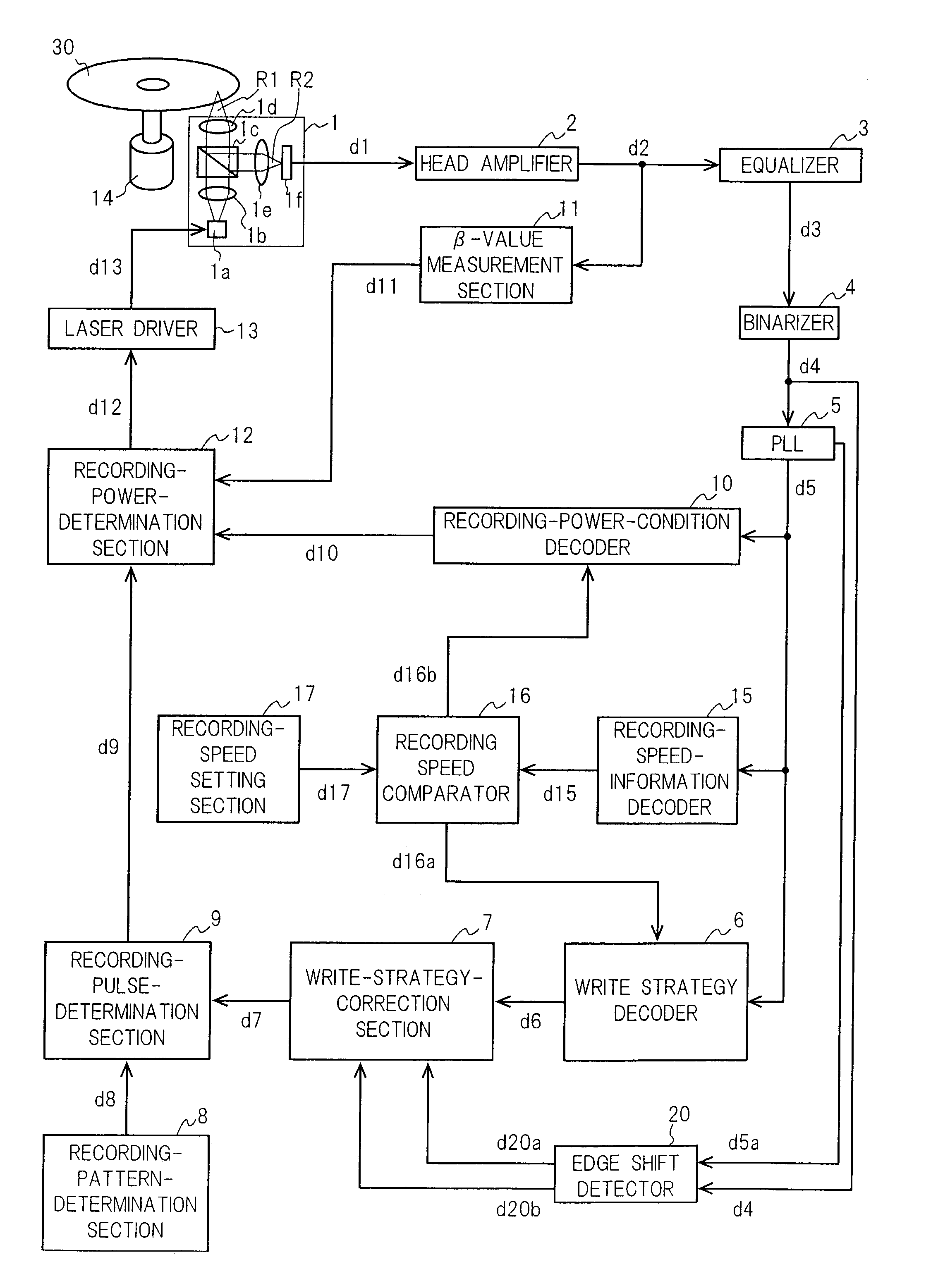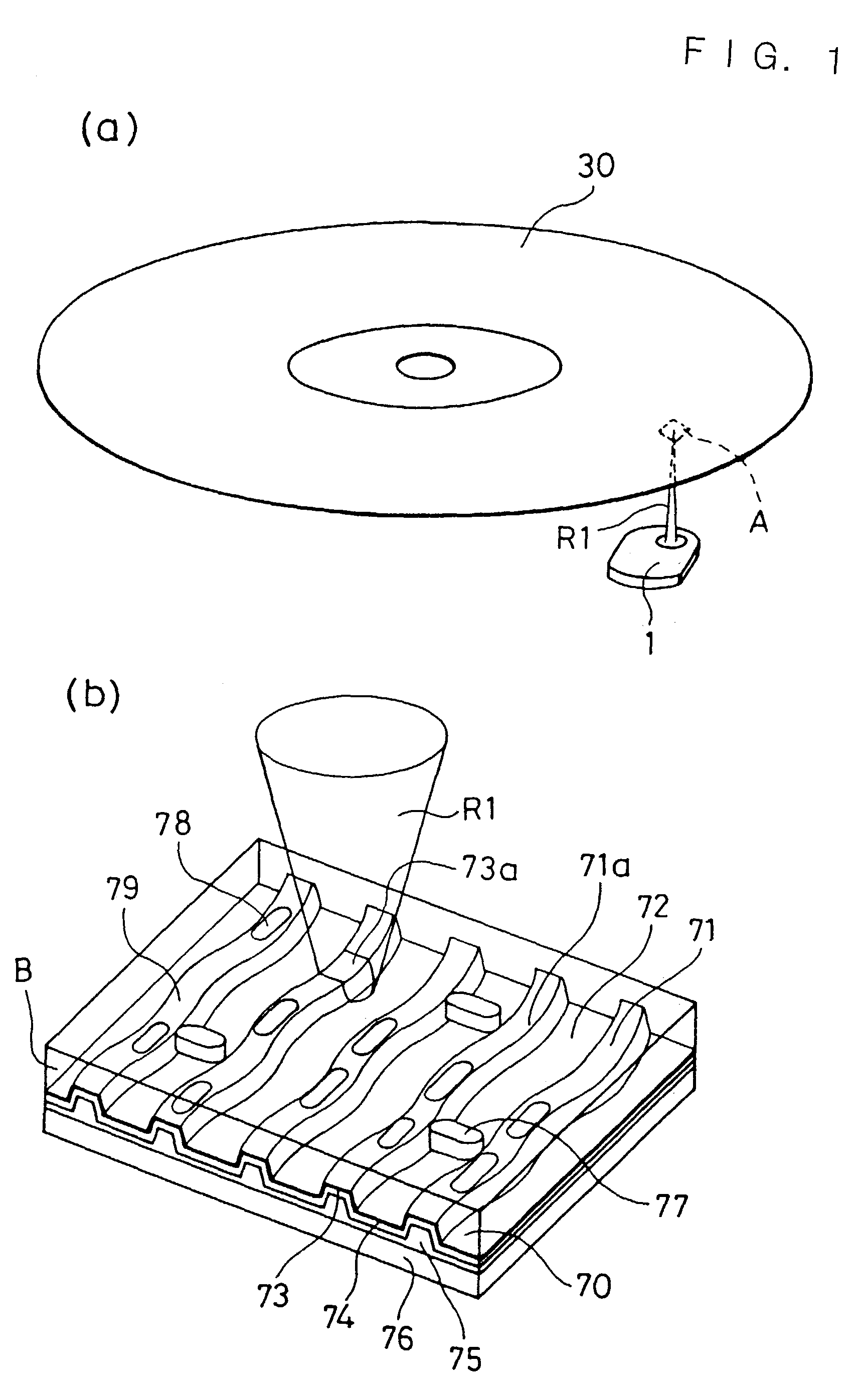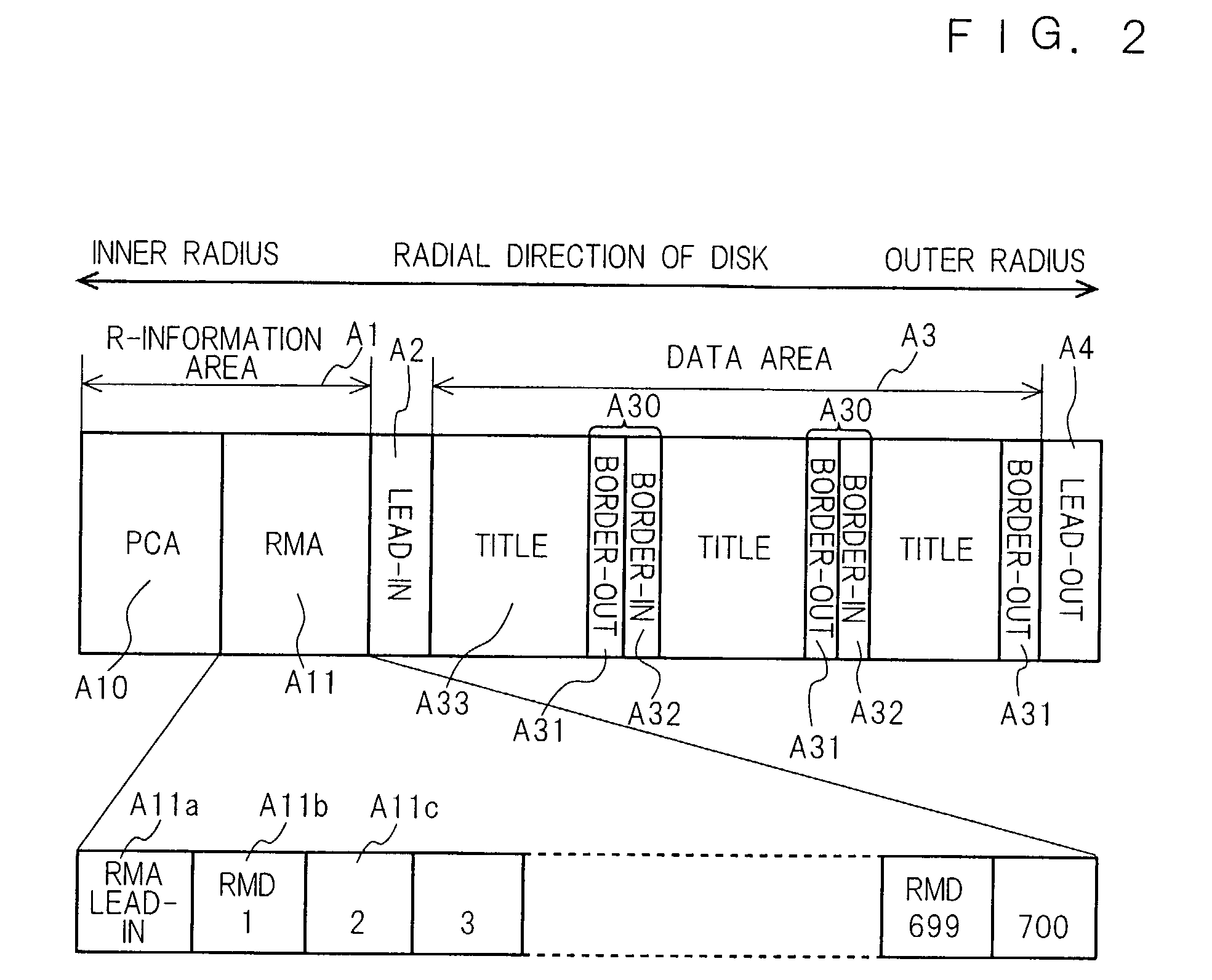Recordable optical disc, optical disc recording apparatus, optical disc reproduction apparatus, and method for recording data onto recordable optical disc
a technology of optical disc and recording apparatus, which is applied in the field of recording optical disc and optical disc recording and reproducing apparatus, can solve the problems of insufficient accuracy in positioning the edge of the mark, large heat generation of the recording mark, and distortion of the recording mark, and achieve high-speed and high-quality data recording
- Summary
- Abstract
- Description
- Claims
- Application Information
AI Technical Summary
Benefits of technology
Problems solved by technology
Method used
Image
Examples
example 1
[0253]The following describes a DVD-R 30 serving as a recordable optical disk according to Example 1 of the invention. The part (a) of FIG. 1 is a perspective view showing the overall appearance of the DVD-R 30 and the appearance of a radiation by a pickup 1 of a DVD-R recorder with laser light R1. The part (b) of FIG. 1 is an enlarged view of a small area A surrounded by broken lines in (a) of FIG. 1 when viewed from the back side. A cross section B of the DVD-R 30 perpendicular to its surface and parallel to its radial direction is shown in (b) of FIG. 1.
[0254]The DVD-R 30 is a disk based on the standard, the DVD-R for General Ver. 2.0, and measuring about 120 mm in diameter and about 1.2 mm in thickness. The disk substrate 70 measures about 0.6 mm in thickness and is made of polycarbonate. The surface of the disk substrate 70 comprises grooves 71. The grooves 71 are a spiral groove concentric with the disk substrate 70. The groove 71 has a wobble 71a, i.e., a transversely and fin...
example 2
[0293]FIG. 4 is a block diagram showing a DVD-R recorder according to Example 2 of the invention.
[0294]A DVD-R 30 is a DVD-R similar to the above-described one of Example 1 of the invention. A spindle motor 14 revolves the DVD-R 30 around its center axis. Then, the revolution per minute of the spindle motor 14 is controlled such that the line velocity of the DVD-R 30 is maintained substantially constant at the focus of the laser light R1 from a pickup 1. The line velocity is set, to be equal to a positive integral multiple of the standard speed 3.49 m / s.
[0295]The pickup 1, at the time of data reproduction, radiates the DVD-R 30 with laser light R1 and converts the reflected light R2 into an analog signal d1 as follows. A semiconductor laser 1a emits the laser light R1 at a predetermined power level. The power level (reproducing power) is too low to change the property of the recording layer of the DVD-R 30, that is, approximately 0.7–1 mW. The laser light R1 emitted by the semicondu...
example 3
[0372]FIG. 9 is a block diagram showing a DVD-R recorder according to Example 3 of the invention. In contrast to the DVD-R recorder according to Example 2 (See FIG. 4), the DVD-R recorder according to Example 3 comprises a block error rate detector 20A in place of the edge shift detector. In FIG. 9, the same reference symbols as those in FIG. 4 designate components similar to those of Example 2 shown in FIG. 4. Furthermore, the description of Example 2 is cited as details of the similar components.
[0373]The block error rate detector 20A compares the digital signal d5 from the PLL 5 with the test recording pattern d8 from the recording-pattern-determination section 8 and detects the block error rate of the digital signal d5. Here, the block error rate refers to the error rate of the digital signal d5 measured for each of the ECC blocks of the DVD-R 30. Each of the ECC blocks comprises 16 sectors and each of the sector is available for recorded data of substantially 182 bytes×13 in am...
PUM
| Property | Measurement | Unit |
|---|---|---|
| thickness | aaaaa | aaaaa |
| diameter | aaaaa | aaaaa |
| thickness | aaaaa | aaaaa |
Abstract
Description
Claims
Application Information
 Login to View More
Login to View More - R&D
- Intellectual Property
- Life Sciences
- Materials
- Tech Scout
- Unparalleled Data Quality
- Higher Quality Content
- 60% Fewer Hallucinations
Browse by: Latest US Patents, China's latest patents, Technical Efficacy Thesaurus, Application Domain, Technology Topic, Popular Technical Reports.
© 2025 PatSnap. All rights reserved.Legal|Privacy policy|Modern Slavery Act Transparency Statement|Sitemap|About US| Contact US: help@patsnap.com



